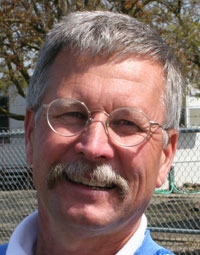Workgroup chair Jeff Mitchell's annual address
By Jeff Mitchell, workgroup chair
Dec. 14, 2010
What I would like to do with you briefly this morning is take a minute to tell the story of the Conservation Tillage and Cropping Systems Workgroup, - who we are, what we’ve done, and why you should believe us. We’re now at a time within the workgroup that a number of very strong and clear benefits of conservation tillage have been demonstrated and documented and there have also been numerous successful examples of CT working in a variety of Central Valley cropping systems. Our workgroup has had a clear role in helping to develop, chronicle and get information on various aspects of CT out to broader spheres of influence, and I’d like to take stock in some of our recent efforts in this regard.
Since the workgroup was formed back in 1998, there have been undeniably a number of important changes in tillage management in California. Prior to that time, we have documented through rather extensive interviews with several truly “old timer” workgroup members, tillage practices had not changed much during the previous 60 or so years.
It was in the mid-90’s and early 2000s when not only were new, revolutionary minimum tillage implements being introduced, but also research was underway documenting the performance of CT systems in California, and farmers were themselves beginning to develop systems that reduced tillage even more.
The “Case for CT” in California has gotten considerably stronger in recent years due to progress both from research as well as from farmer innovation. Today, peer-reviewed publications have documented the following clear benefits of CT in California:
- Cutting costs
- Reducing dust emissions
- Cutting fuel use
- Increasing soil carbon
In addition, very recent work now being prepared for publication, has shown that residues in CT systems can reduce about ½ inch of evaporation per week relative to bare ground, and that when highly efficient irrigation, such as overhead mechanized center pivot irrigation is used with CT, water savings on the order of 35 percent for wheat and also savings for corn compared to furrow irrigation can be achieved.
Workgroup farmer pioneers have also themselves demonstrated more severe forms of CT – no-till and strip-till can be possible and profitable in California for the dairy silage production sector and for tomato production systems.
The knowledge and experience bases for CT in California are thus rapidly expanding and farmers such as Dino Giacomazzi are being recognized for their contributions to the development of increasingly sustainable food and feed production systems.
During this time, there has been a rise in contributions from several domains of the private sector and also increased introductions of CT equipment in California.
To continue to be responsive and relevant to the emerging demands for information on the range of CT systems being developed over these years, our workgroup has done a number of things to enhance its effectiveness.
In 2008, it developed a Strategic Plan that identified four key long-term goals and it set specific, concrete adoption goals for the coming years.
It has recognized the sheer importance of electronic information dissemination vehicles, and thus, in 2010, under the expert work of Jeannette Warnert, it has completely renovated its website.
This website now has a number of features that we are hoping will be useful to folks seeking information on CT and we’re also constantly working to add features such as an interactive “CT farmer to farmer forum” and a tab for K-12 resources.
In 2010, through two grants that support the Workgroup, we are now working with a number of farmer partners on farm demonstration evaluations of CT and cover cropping systems for tomatoes.
We were also one of the founding members of CASA - the Conservation Agriculture Systems Alliance - a tremendously important group of very progressive farmer association leaders in conservation agriculture in North America.
Our involvement in CASA and the more local Central Valley Multi-commodity Project allows us to provide input on and receive information on efforts that are underway aimed at developing mechanisms and programs enabling farmers to receive credit and payment for their conservation systems.
An additional outcome that was achieved in 2010 was the partnership our workgroup has established with the California Overhead Irrigation Alliance, a group of farmer, private sector, and public agency folks who have come together to develop and extend information on overhead irrigation.
The so-called “Case for CT in CA” is thus, being made.
Benefits from CT production systems are being seen and realized each and every day.
The challenge ahead is to collectively find and work on ways to increase the adoption of these profitable and resource-conserving CT systems even more and to do this efficiently and effectively.
To better help us do this, we’re in the process of developing a number of instruments and activities aimed at surveying barriers to CT adoption and eventually using information from this effort to better guide us in developing our workgroup programs.
We have recently met with a statistician up at UC Davis and have also created collaborations with the John Muir Institute of the Environment at Davis to initiate this survey of barriers to adoption program, which we hope will not only guide our workgroup, but also it may help agencies such as the NRCS itself in their conservation planning efforts.
We have made good progress this past year, but we have much yet to do.
We are going to need a greater and better level of commitment and contribution from all of us in the workgroup to accomplish these goals.
The challenges are truly large, but we must focus and dedicate ourselves to achieving solid, lasting impacts.
Together, we can do it!

